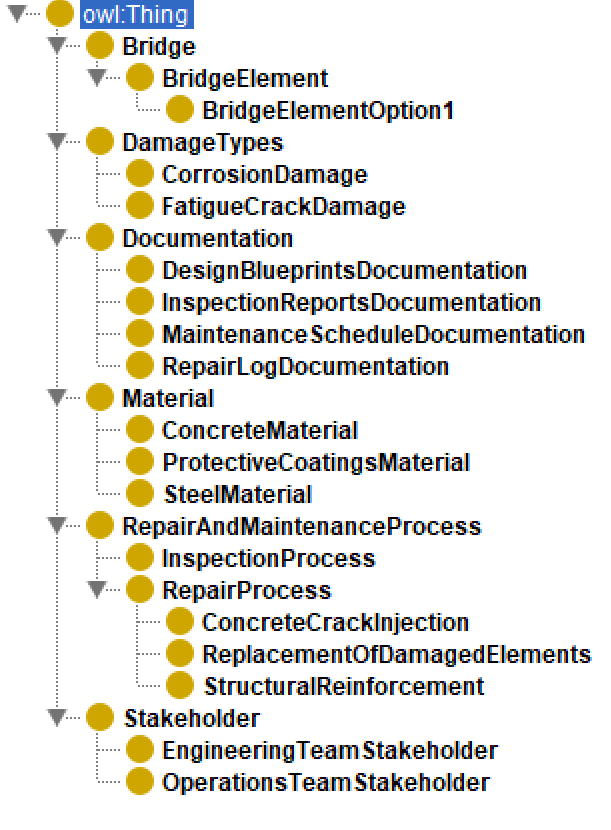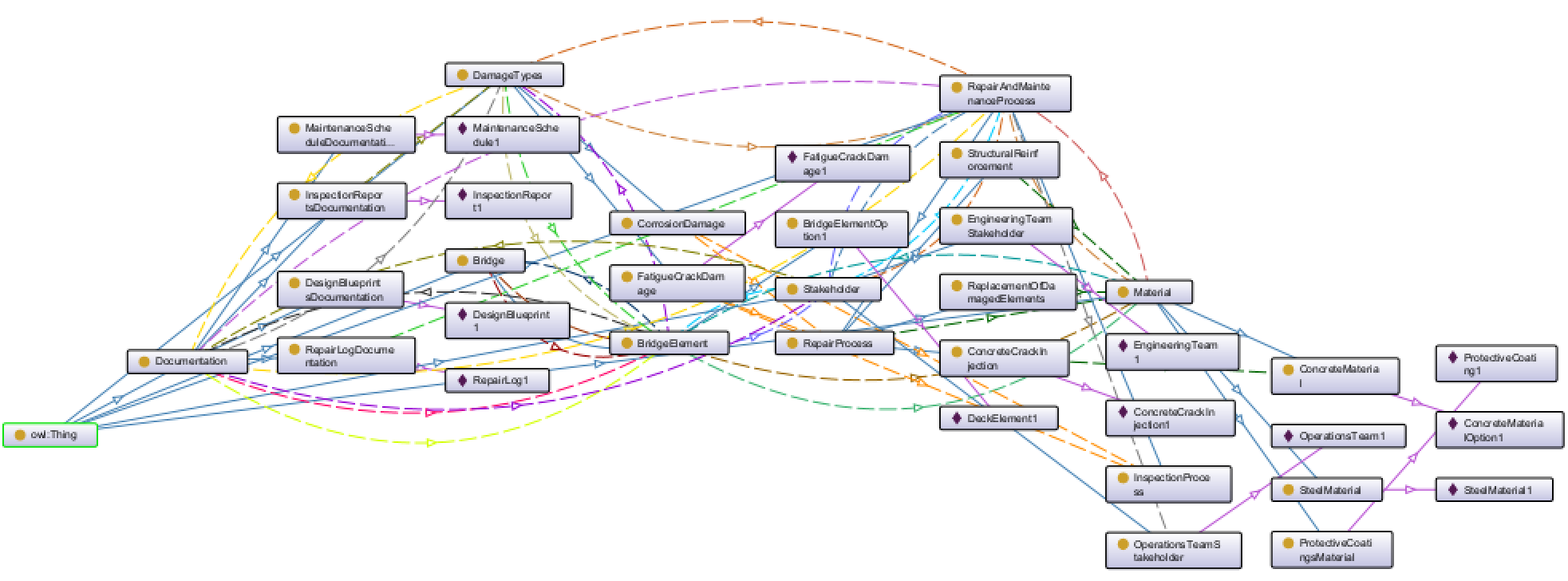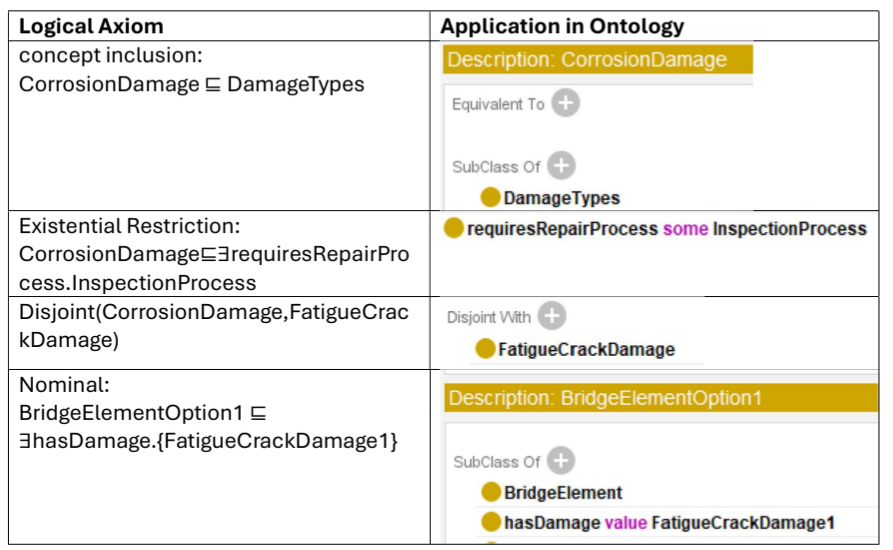This ontology formalizes knowledge of the repair and maintenance of bridges. It organizes hierarchical relationships between bridge components, materials, damage types, documentation, repair processes, and stakeholders. Implemented in Protégé, the ontology serves as a structured knowledge framework to improve decision-making and streamline maintenance operations.
Introduction
Efficient bridge maintenance relies on a systematic understanding of structural components, damages, and repair processes. This ontology provides a structured framework that supports engineers by organizing domain knowledge in a logical and accessible manner. The key contributions of the ontology includes the following points.
Defining the main bridge components and their relationships within the context of maintenance, enabling a clear and comprehensive view of the bridge’s structural elements. Categorizing different types of damages and their corresponding repair methods, facilitating targeted and effective maintenance strategies. Integrating documentation and stakeholder roles, ensuring that all relevant information and responsibilities are clearly defined and easily accessible for maintenance teams.
Ontology Structure
The ontology follows a hierarchical model where the Bridge class is divided into subclasses such as BridgeElement, DamageTypes, Documentation, RepairAndMaintenanceProcess, and Stakeholders. It was developed using guidelines from “Ontology Development 101″ and Protégé documentation.
Classes and Relationships
The classes and relationships in the ontology were developed based on information extracted from the books listed in the references. At the core of the ontology is the Bridge class, which represents the overall structure of the bridge and its primary components. Under this, the BridgeElement subclass is defined to capture the specific structural parts of the bridge, allowing for a detailed and organized representation of its various elements and connecting the following Classes to a specific physical instanciation of a Bridge Element.
- BridgeElement: Represents structural parts of a bridge.
- DamageTypes: Includes corrosion and fatigue cracks, which impact structural safety.
- Documentation: Covers blueprints, inspection reports, and repair logs.
- Materials: Includes concrete, steel, and protective coatings.
- RepairAndMaintenanceProcess: Encompasses inspections, crack injection, structural reinforcement, and element replacement.
- Stakeholders: Engineering and operations teams involved in bridge maintenance.
Key Object Properties
The ontology defines relationships such as:
- hasMaterial: Links components to materials (e.g., steel or concrete).
- hasDamage: Connects components to specific damage types.
- requiresRepairProcess: Assigns appropriate repairs to damage types.
- performedBy: Identifies responsible stakeholders.
- usesMaterial: Links repair processes to required materials.
- documentsDamage: Tracks damage history in reports.
Data Properties
- hasWeight: Represents the weight of bridge elements.
- hasInspectionDate: Records inspection timelines.
- hasRepairCost: Tracks monetary costs of repairs.
Logical Axioms
The ontology incorporates axioms such as concept inclusion, existential restrictions, and inverse relationships. They are specified in the following Table:
Applications
The potential applications of the ontology include:
- Inspection Automation: Using the ontology, inspection priorities can be assigned based on damage types and their impact on structural elements. For example, corrosion in trusses can trigger highpriority inspections.
- Repair Planning: The ontology helps engineers plan repairs by linking damage types to appropriate processes. For instance, fatigue cracks in connections may require
ReplacementOfDamagedElements, while deck cracks may require ConcreteCrackInjection. - Documentation Management: By organizing documentation with inspection reports and repair logs, the ontology supports the engineer with e.g. efficient retrieval of past data, simplifying the compliance with regulations and analysis of damages.
Intended Use and Users
- Engineers: To manage technical assessments and repairs.
- Operations Teams: To simplify daily maintenance workflows.
- Project Managers: To track maintenance schedules, budget allocation, and adherence to repair protocols.
The Users can in Germany e.g. be the Deutsche Bahn for maintaining their Railway Bridges.
References
- Noy, N. F., & McGuinness, D. L. Ontology Development 101: A Guide to Creating
Your First Ontology. - Karsten Geißler, Handbuch Brückenbau Entwurf, Konstruktion, Berechnung,
Bewertung und Ertüchtigung - Mehlhorn, Gerhard; Curbach, Manfred, Handbuch Brücken : Entwerfen,
Konstruieren, Berechnen, Bauen und Erhalten


